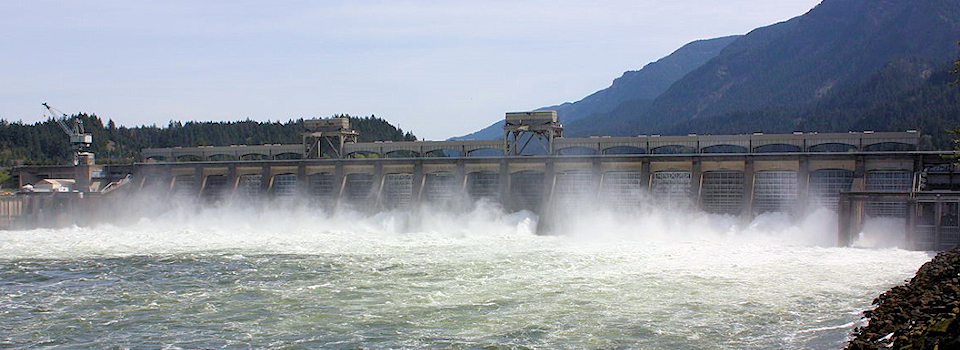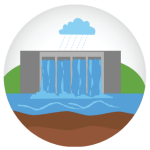The Facts
Hydropower is currently one of the most important source of renewable energy for the generation of electricity worldwide.
While a large percentage of the potential hydropower capacity has been developed in North America and Europe, considerable potential hydropower capacity remains in Africa, Asia and Latin America. As such, most of the forecasted growth in hydropower generating capacity, which was expected to increase by a compound annual growth rate of approximately 3% between 2009 and 2015, was expected to come from countries such as China and India.
Hydropower plants are tailored to the specific environment in which they are built in. Size and function can vary widely, but the vast majority fall into three categories: run of river, reservoir, and pumped storage:
- A run of river plant harnesses energy mainly from river flows, and as such can have significant daily, monthly, seasonal and yearly variations in volume. It also has very limited storability of water; and
- A reservoir stores water and thus provides electricity on demand. Very large reservoirs can retain months or years of inflows and can also provide flood protection and irrigation to the local area. Most reservoirs are artificially created by building a dam to control the river flow, but natural lakes can also function as reservoirs; and
- A pumped storage plant is a turbine that pumps water from a lower reservoir to be stored to a higher reservoir for when potential energy use is demanded. Water is pumped up during periods where electricity supply exceeds demand. When needed, the water is then released from the upper reservoir into the turbine by way of gravity.
![]()
Currently
Hydropower currently contributes 16% of worldwide electricity generation and consists of 86% of global renewable electricity.
The top five hydropower producing countries in 2010 were China with 694 terawatt hours (―TWh) of production, followed by Brazil (403 TWh), Canada (376 TWh), the U.S. (238 TWh) and Russia (165 TWh). Worldwide capacity has increased by 52% from 1990 to 2009 to reach approximately 1,000 gigawatts, mostly due to rapid growth in China.

In September 2008, there were a total of 615 large hydropower plants with a capacity of over 300 megawatts in the world. In terms of technical potential for hydropower, the possible global production is estimated to be approximately 15,000 TWh per year. It is estimated that in 2010 over 3,381 TWh were generated worldwide from hydropower.
The most important drivers for hydropower development are:
- Sites that will have long and productive local generation capabilities in terms of water flow, as well as low life cycle costs. Many sites built 50 to 100 years ago are still in operation today and have low operating costs;
- Desires for reliable and clean electricity production with minimal service interruptions; and
- Cost-effective upgrades, redevelopments and improvements to existing plants as new technologies emerge to increase the profitability of hydropower plants. This can involve flexible operations that will maximize plant efficiency when variations in volume occur, as well as the ability to store energy in order to balance the seasonal load on the energy grid.
There are, however, limiting factors in developing the global technical potential of hydropower, such as:
- While hydropower is a renewable energy source, water quality may be affected, particularly if significant waste enters the reservoir from an upstream source. Also, older dams were often developed without consideration for migrating fish and the regional biodiversity, which has led to a negative stigma around hydropower plants;
- Even though hydropower is considered to be less variable than wind or solar energy, over a long time scale, it remains dependant on the level of precipitation and/or water run-off;
- Projects, in particular large-scale ones, necessarily impact several parties, including local populations, especially when the area faces flooding and/or a disruption of the local ecosystem. This has caused substantial opposition by the public and a decreased public acceptance of large projects. Careful planning must be done and stakeholders must be involved in the decision-making process in order for the project to be successful;
- Financing hydropower projects has been challenging as even smaller scale projects require significant capital investment. It is not uncommon for new projects to exceed a billion dollars in value. Because of this, many industrialized countries have turned to upgrading and redeveloping existing plants as opposed to building new ones. On an economies of scale basis, larger plants have lower costs per megawatt than smaller ones; and
- The industry is heavily regulated and new investments are subject to significant site, feasibility, and environmental assessments prior to the project commencing construction. In the U.S., new legislation has recently been approved with the aim of streamlining regulations for small hydropower projects. In particular, when the project represents an addition of capacity to an existing dam, which would not have an incremental environmental impact, developers will no longer have to go through the same process as a new construction. Additionally, smaller projects with low environmental impact will become more feasible by reducing their delay for approval.
NEXT:

